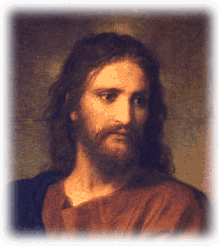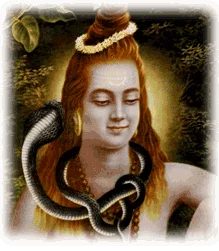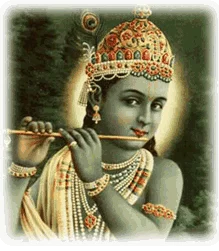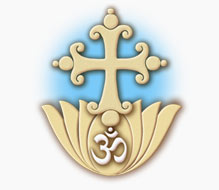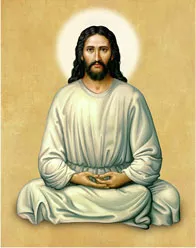I am Om, the Word that is God. (Bhagavad Gita 7:8)
In searching for material on Om, the Pranava, I came across a kind of digest of the Upanishads in which the author had made the following paraphrase of the teachings of the Mandukya Upanishad:
“The Syllable Om is the Atman. One who knows this has his jivatman merged in the Paramatman–yea, one who knows this. Know the Omkara; for he who knows Om need know nothing further. Meditating, be absorbed in Om. It is Brahman, the fearless. For him who is ever absorbed in Om there is no fear any more. Om is the lower and the higher Brahman. It is the beginning of everything, its middle and its end, too. He who thus knows Om is merged in it forthwith by means of it. Know Om as Brahman, who is enthroned in the heart of all. The sage who knows Om as all-pervading grieves not. Partless and with unending parts is the blessed cessation of duality. Who knows Om as such, he alone is a muni, none else.”
As the Atharvashikha Upanishad 3:4b says: “He who knows Om in this manner will attain the fruits resulting from all kinds of meditation, from resorting to yoga and jnana.”
As I compiled the material on Om from the scriptures and the Masters of Wisdom I was astounded at the amount I discovered, and even more astounded at how little of it is known to any but the most scholarly. The panorama of these texts provided me with a vista regarding Om that awed and inspired me. I easily believed the words of Gaudapada, the guru of the guru of the great Shankaracharya, who wrote in his commentary on the Mandukya Upanishad: “Om is indeed the beginning, middle, and end–everything. One should know Om to be God seated in the hearts of all. Meditating on the all-pervasive Om, the intelligent man grieves no more. The Om, without measures and possessed of infinite dimension, is the auspicious entity where all duality ceases. He by whom Om is known, is the real sage, and not so is any other man.” And Shankara, commenting on these words, affirmed: “He who knows Om is a sage because of his meditating on the Supreme Reality, and not any other man, though he may be learned in the scriptures.”
Consequently I wrote Om Yoga to share with others what I had learned from both my own experience in meditation and my researches in the age-old lore of Om. However, it seemed to me that serious students of yoga would benefit from having access to the entire range of material on which it was based. And so this book was put into shape for your study along with some brief comments of my own. I hope you will find it as fascinating and valuable as I do, concluding with Shankaracharya that: “Through Om the Lord is met face to face.”
Swami Nirmalananda Giri
Atma Jyoti Ashram (Light of the Spirit Monastery)
Cedar Crest, New Mexico
ocoy.org

